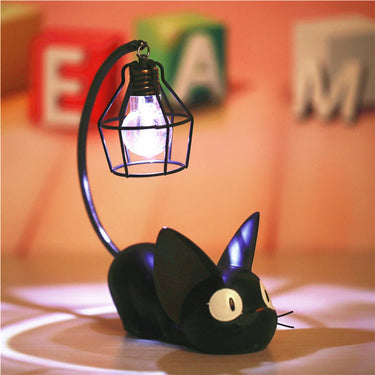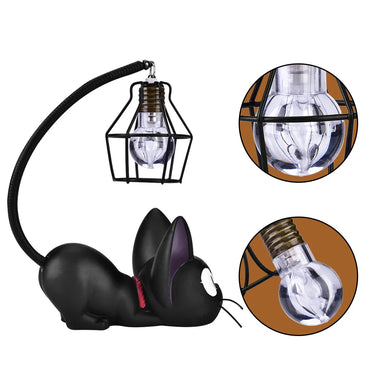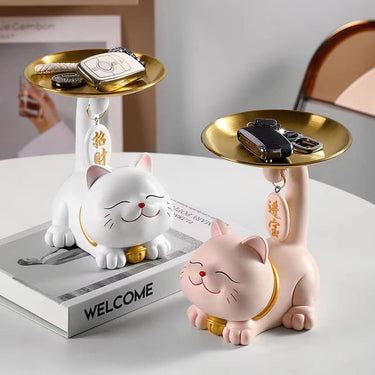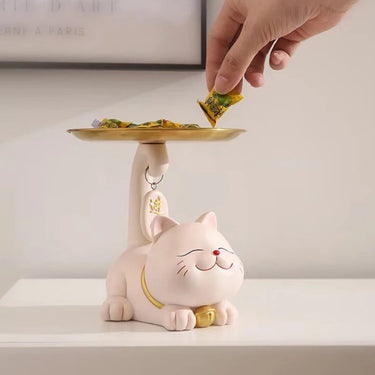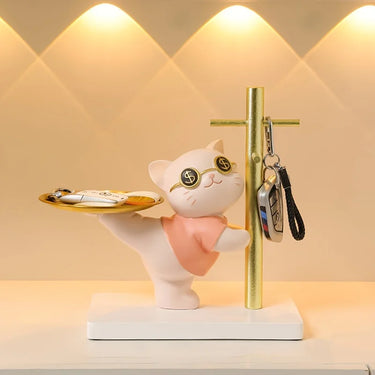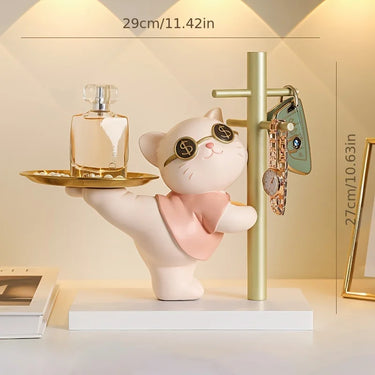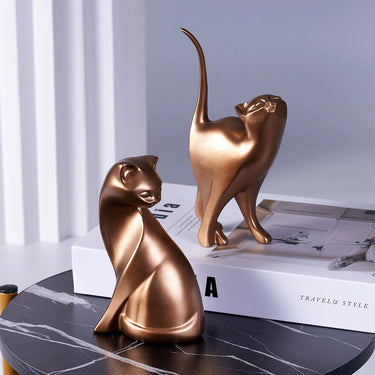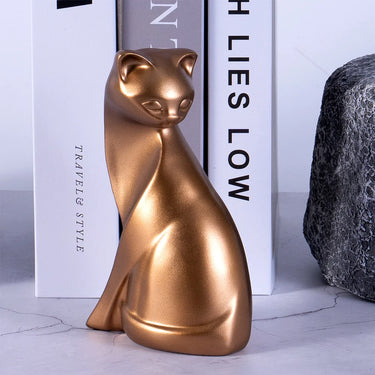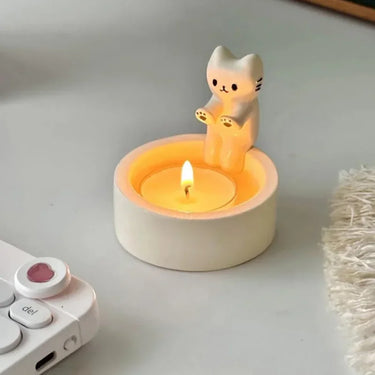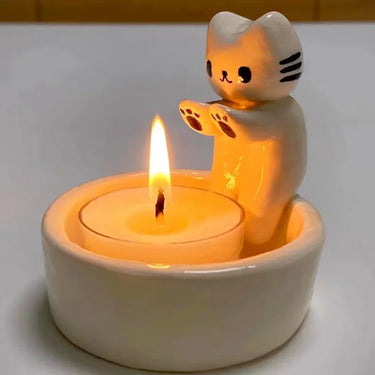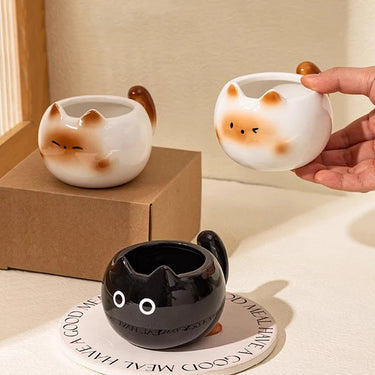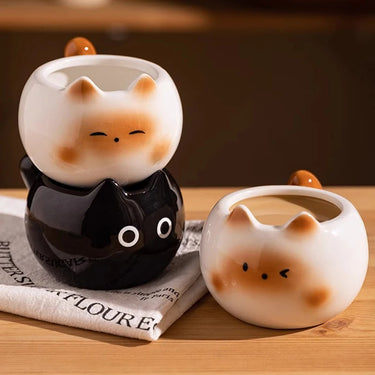As with other species, a cat's eye color is determined by genes passed down from its mother and father. Varying genetics implies varying levels of melanin, the amino acid responsible for the pigment in the eyes, skin, and hair.
It's All About The Melanin
The more melanin present, the darker the cat's fur will be. But this rule does not necessarily apply to eye color since melanin affects the eyes differently. This is the reason why your black cat could have blue eyes.
Melanin comes from melanocytes, and the amount of melanocytes present in the body determines what a cat's eye color will be. Wild cats such as lynxes as well as bobcats typically have hazel eyes.
Brown eyes are also typically seen in feral cats. Nevertheless, the eye color of domestic felines can vary from different shades of blue to green to yellow, orange, and copper that people commonly mistake for hazel.
What is the Range of Cat Eye Colors?

The eye color is all in the iris, the part of the eye aptly named after the Greek goddess of the rainbow. It has two layers that house the color-causing cells that are known as melanocytes. These two layers are called the stroma as well as the epithelium. Each layer carries melanocytes in different ways.
In the stroma, the melanocytes are dispersed; in the epithelium, the melanocytes are densely packed. The colors can be blue, green, yellow, gold, amber, copper, or red. Some cats may even have mismatched eyes!
Are Cat Breed and Eye Color Linked?

In many cases, they are. The color of a cat's eyes is determined by genes, much like the color of their coats. Specific breeds will be seen with one eye color.
Siamese cats are perhaps the best example of a breed with the eye color connected to their coat color. All Siamese cats have blue eyes appearing in varying tones of intensity. Typically, purebred cats will have more intense shades as compared with moggies.
Cat Eye Colors
These shades aren't distinct, so you might find it difficult to pin your feline's exact eye color into a specific one. Perhaps your cat has an eye color that sits someplace in between two tones. We recommend that you consider cat-eye colors as a spectrum rather than distinct colors.
1. Blue

Cats with blue eyes don't have melanin in their irises. The blue cat's eyes are clear. We see the blue shade as a result of light reflecting around the rounded sides of the irises, much like how we see green on the sides of a mirror. It seems unlikely however it is true!
Blue eyes can vary from a pale sky blue to a deep sapphire.
Blue eyes are more typical in white cats. This is a result of the dominant white gene referred to as the epistatic white gene. This gene shuts out any o genetics that code for color, and this is what causes a white layer. White cats with blue eyes as a result of these genetics are also more likely to be deaf than white felines with yellow or green eyes. This happens because the gene that codes for a white coat and blue eyes can create the cochlea of a cat's internal ear to deteriorate within days of birth.
2. Green

Green eyes are often connected with mystical powers. Like blue eyes, green eyes have little melanin in them.
The green of a feline's eyes can differ from a green with yellow touches, green with a touch of blue, and true green. It's also common to see flecks of yellow or gold within a green-eyed cat's iris.
The Egyptian Mau famously has green eyes in a gooseberry color. Havana cats typically have emerald green eyes, and Norwegian Forest cats can have eyes in various green tones. Russian Blue cats likewise have dazzling green eyes that contrast with their grey-blue fur!
3. Hazel

Hazel eyes are a blend of golden yellow and green. This is the eye color of many wild cats like Lynxes and Bobcats. It's also a standard color in feral felines.
Breeds with hazel or brown eyes include the Bengal, Singapura, Abyssinian, Cornish Rex, and the Scottish Fold.
4. Yellow Or Gold

Felines with Yellow or gold eyes are associated with craftiness and the extraordinary. Black cats seem to be most related to this eye color. Traditionally, yellow or golden eyes are connected with the power to shapeshift. Could this be why black pet cats were associated with witches?
Large felines like tigers and lions will commonly have yellow or gold eyes—this where the precious stone tiger's eye is named as such. Often a cat will have chartreuse eyes. The brownish-yellow orange shade is more intense--this color is referred to as copper.
Yellow eyes can vary from a light lemon yellow to golden shades and into deep and rich brownish-yellow.
Breeds that frequently have yellow or amber eyes are American Shorthair, Manx, British Shorthair, Bombay, and Sphynx.
The Burmese cat can have specifically striking golden eyes, having tones of brilliance and depth.
5. Orange

While it can sometimes be hard to point out the distinction between a green eye with yellow streaks or a yellow eye with flecks of green, there's no complication when it pertains to orange feline eyes. This color was initially established by British cat breeders who wanted a color that stands apart from any coat.
Breeds like the Devon Rex, Japanese Bobtail, American Wirehair, Maine Coon, and the Turkish Van can all have orange eyes.
6. Copper

Copper is the darkest eye color a feline can have. Their eyes are light brown with tones of red and orange. Often, there are also flecks of yellow or green. The copper color a rare shade compared to others, and while it's different from orange, it's just as uncommon.
The Japanese Bobtail, Maine Coon, Persian, Cornish Rex, and Chartreux can have striking copper eyes.
7. Odd-colored Eyes

The technical term for odd-colored eyes is heterochromia iridium, which describes that each iris is a different shade. This happens when a white detecting gene obstructs the distribution and pigment concentration in the iris as the cat develops. This can be inherited, genetic, or caused by a mishap or injury.
Odd-colored eyes are usually seen in white felines with the epistatic gene. Typically, one eye will be blue, and the other will be green, brown, yellow, or orange.
Odd-colored eyes are preferred in particular types, including the Turkish Van, Japanese Bobtail, Persian, and Sphynx cats.
Felines with dichroic, or dichromatic, eyes will combine two distinctive shades within both eyes. This is rare and is brought on by the cat having various degrees of melanin in distinct areas of their irises.
Sometimes, the eyes will have a distinctive oval of one color nearer the pupil, which blends out right into another color. Other times, the colors will be divided into areas, so the half or a quarter of the eye will be one color, and the remaining section will be a different shade.
In some cases, one eye will undoubtedly be solid-colored, and the other eye will be dichroic.
Which Eye Colors Are Traditionally Linked with Health Issues?

White felines with blue eyes often tend to be deaf. Albino cats, like all albinos, will be susceptible to bright lights and sunburn easily. Heterochromia triggered by genetics does not seem connected to any health issue, yet heterochromia caused by illness or injury might include a loss of spatial awareness.
When Does A Changing Eye Color A Health Issue?

A feline with orange eyes that were formerly a different shade can suggest a swelling called uveitis. The reason for this might be diabetes, hypertension, eye trauma, metastatic tumors, a fungal or microbial infection, or a viral condition such as feline herpes, FeLV, FIV, or FIP.
If they look darker than typical, it might result from red blood cell development. There is also glaucoma to watch out for. Glaucoma is an ocular problem accompanied by enhanced stress in the eye. This will cause a loss of vision if left untreated. The typical signs to look for are a milk-like white eyeshade.
All the same, if your cat is well past three months and their eye color suddenly changes, there might be a health problem, and you need to take your cat to a veterinarian.
If one pupil appears much more dilated than the other, this may indicate a blast, brain hemorrhage, aneurysm, or optic neuritis. Anything uncommon means something can be wrong. Always be on the side of caution.
Conclusion
Eyes are undoubtedly one of the most beautiful features of a feline. Pay close attention to them and bear in mind if they suddenly look different. With treatment and attention, your cat might have an ideal vision for the rest of its life.
Whatever eyeshade your cat has, it's good! It's the mix of each cat's eye color, coat color, and personality that makes us love them.
If you have a cat that has a rare eye color, we would love to learn about them through the comments below!




